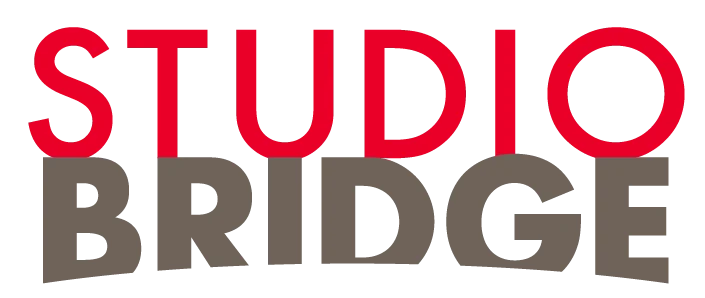Whoa! Ever tried juggling multiple cryptocurrencies and felt like your wallet was more like a cluttered drawer? Yeah, me too. The struggle to find a single, reliable wallet that not only holds several coins but also lets you swap between them without a hitch is very very real. Initially, I thought, “Just use any wallet with a multi-coin feature,” but then I realized that most solutions either kept things clunky or locked you into centralized exchanges. Something felt off about that approach…
Here’s the thing. Atomic swaps have been tossed around as the ultimate answer to seamless crypto trading—peer-to-peer, no middleman, just pure blockchain magic. But is it really that simple? My instinct said, “If this was foolproof, everyone would be doing it by now.” Turns out, the tech is promising but still feels like it’s got a few growing pains. The idea of swapping coins atomically—meaning without trusting a third party and ensuring both sides of a trade happen simultaneously—sounds like sci-fi but it’s slowly becoming reality.
Okay, so check this out—staking adds another layer of complexity and opportunity. It’s not just about holding your coins; it’s about putting them to work. I’ll be honest, I was skeptical at first. “Why lock up my assets when I might want quick access?” But after digging deeper, staking rewards can be a game changer if you pick the right platform and coins. That said, it’s not a set-it-and-forget-it deal; you gotta understand the risks and the lock-up periods.
On one hand, atomic swaps promise decentralization and direct control, but on the other hand, staking demands a commitment that might not jive with everyone’s cash flow needs. Though actually, when combined thoughtfully within a single portfolio, they can complement each other rather nicely. Managing all this requires a wallet that’s more than just a storage box—it has to be an ecosystem.
Really? Yep, managing a crypto portfolio these days is like trying to keep track of stocks, bonds, and real estate all in one app. Except your assets are volatile, sometimes illiquid, and scattered across blockchains that don’t always talk to each other. That’s why I kept circling back to wallets like the atomic wallet. It’s one of the few that tries to stitch all these threads together—multi-coin support, built-in atomic swaps, and staking options.

So what bugs me about most wallets is their piecemeal approach. Some excel at holding coins but force you onto exchanges for swaps. Others offer staking but lack intuitive portfolio tracking. The atomic wallet, however, blends these features in a fairly elegant interface. I’m biased, sure, but having the ability to swap assets instantly without hopping onto an exchange feels like a breath of fresh air.
Atomic Swaps: The Promise and the Pitfalls
Initially, I assumed atomic swaps would just be another flashy crypto buzzword. But then, I actually tried using wallets that support them. Hmm… it’s not always plug-and-play. The tech relies on smart contracts and hash time-locked contracts (HTLCs) which, in simple terms, guarantee that if the swap doesn’t happen on one side, the whole transaction rolls back. Pretty neat, right? But the catch is that not all coins and blockchains are compatible with this method yet.
There’s also a user-experience hurdle. Atomic swaps often require a bit more technical know-how and patience. I remember fumbling through a swap where I had to manually verify transaction statuses on two different block explorers. Not ideal for the casual user. That said, wallets like atomic wallet have made strides in smoothing out these kinks, automating much of the heavy lifting behind the scenes.
My gut feeling is that atomic swaps are where DeFi meets everyday usability, but the ecosystem isn’t quite there yet for mass adoption. On one hand, they eliminate counterparty risk, but on the other, they can be slower and less liquid than centralized exchanges. So, if you’re in a hurry or dealing with huge volumes, atomic swaps might not be your best bet.
Still, the idea that you can trade directly from your wallet, bypassing centralized platforms, is powerful. It’s like owning your own mini-exchange in your pocket. And this is where the beauty of multi-currency wallets shines: they’re the doorway to atomic swaps without juggling multiple apps.
Staking: Earning While Holding
Now, staking is a whole different beast but equally enticing. The concept is simple: you lock up your coins to support network operations and, in return, earn rewards. Sounds like a win-win. But the devil’s in the details. Lock-up periods can range from days to months, and if crypto markets suddenly dip, you might be stuck holding during a downturn.
For me, the deciding factor was flexibility. Wallets that let you stake directly without sending coins off to a third party are far more appealing. The atomic wallet offers this convenience, letting you stake popular coins like Tezos and Cosmos right inside, which gives me a bit more confidence that I’m not losing control.
Interestingly, staking also encourages a more strategic approach to portfolio management. I found myself thinking beyond just price speculation to considering network health, inflation rates, and staking yields. Okay, so yeah, this might sound nerdy, but once you get into it, it feels like playing a long game instead of gambling.
Here’s a little hiccup, though: staking rewards fluctuate, and sometimes fees or slashing penalties eat into your returns. Plus, not every coin supports staking, so pick your assets wisely. It’s definitely not a “set-and-forget” strategy unless you’re comfortable with some risk and research.
Managing Your Crypto Portfolio: More Art Than Science
Managing a portfolio with multi-currency holdings, staking positions, and atomic swap opportunities can get overwhelming. I sometimes found myself checking five different apps, getting lost in transaction histories and reward rates. That’s why a unified platform matters. The atomic wallet tries to offer a snapshot of your holdings, staking status, and swap options all under one roof.
Still, the portfolio tracking tools aren’t perfect. I noticed occasional lags in price updates and some coins missing real-time data. But it’s better than piecing together info from half a dozen sources. I guess in this space, you take what you can get and adapt.
Something else worth mentioning—portfolio diversification in crypto isn’t just about spreading risk; it’s about balancing utility and yield. I mean, holding Bitcoin feels like digital gold, but staking smaller altcoins can earn you passive income. Finding that sweet spot requires constant tweaking and a wallet flexible enough to handle it all.
Oh, and by the way, security can’t be ignored. Multi-currency wallets that connect to staking and swapping functions increase your attack surface. So, I’m big on wallets that prioritize private keys’ security and, ideally, let you keep full control. The atomic wallet offers encrypted private key storage locally, which, frankly, gives me peace of mind.
Wrapping Up the Crypto Wallet Experience
Looking back, I started this whole journey just trying to avoid the hassle of multiple wallets and exchanges. What I found was a complex, evolving landscape where solutions like atomic swaps and staking are redefining how we think about managing crypto assets. The tools are still rough around the edges but improving fast.
Using a wallet like the atomic wallet feels like having a Swiss Army knife—multi-functional, sometimes a bit bulky, but incredibly handy when you need it. I’m not saying it’s perfect—nothing really is—but it’s a big step toward a more integrated crypto experience.
So yeah, if you’re diving into crypto with an itch for control and flexibility, look for wallets that support atomic swaps and staking natively. Trust me, it changes how you interact with your portfolio. And while you’re at it, keep a little skepticism handy. The space moves fast and surprises often.


No Comments